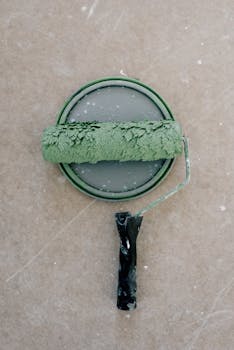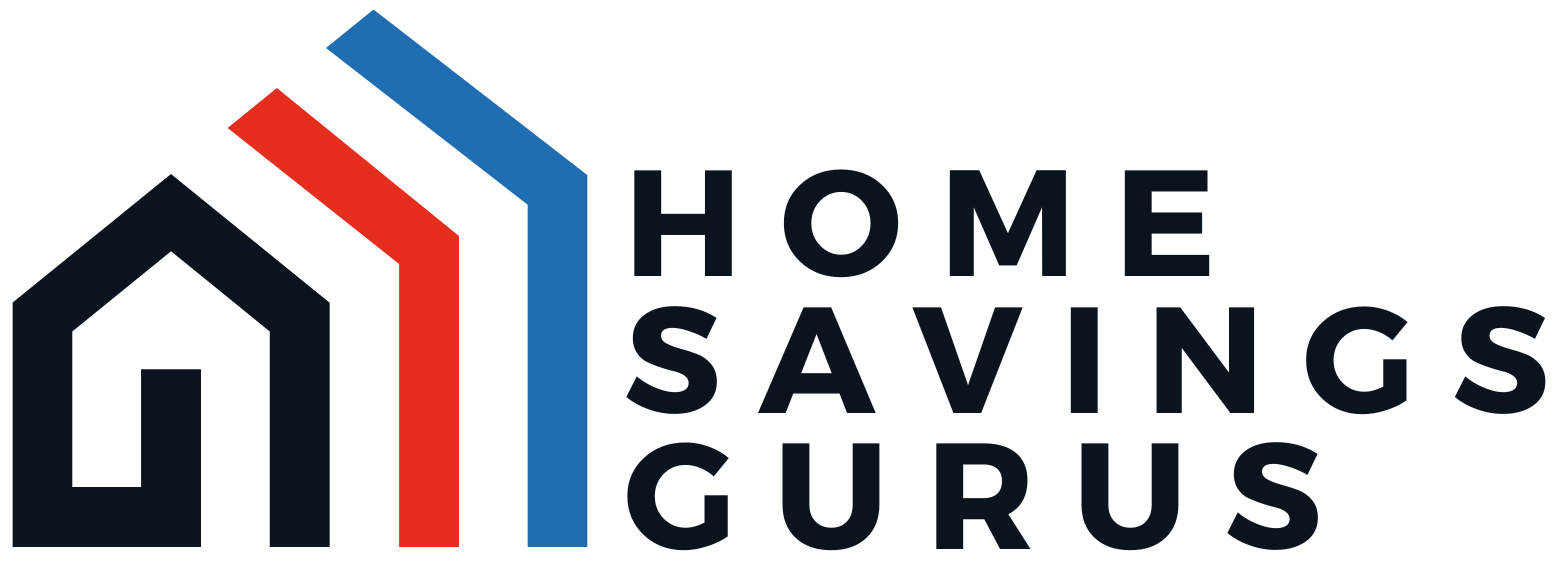Save Money on Homeownership Expenses with These 10 Tips
Introduction
Are you tired of seeing your hard-earned money disappear into the black hole of homeownership expenses? You’re not alone. With rising costs of living, many homeowners are feeling the pinch of high mortgage rates, exorbitant utility bills, and costly maintenance. But fear not, the solution to your financial woes could be simpler than you think. Welcome to our comprehensive guide ‘Save Money on Homeownership Expenses with These 10 Tips’, where we’ll share proven strategies to trim down these costs and help you save more money. Whether you’re a seasoned homeowner or a first-time buyer, these tips will equip you with practical ways to make your homeownership journey less of a financial burden and more of a rewarding experience. Stay tuned, and let’s start saving together.

Tip 1: Lower Your Utility Bills
Turning your home into a hub of energy efficiency isn’t just good for the planet—it’s great for your wallet, too! One of the most effective ways to cut down on your homeownership expenses is by reducing your utility bills. Here are four actionable tips that can help you save money each month.
Install LED Lights and Dimmer Switches
Switching to LED light bulbs can lead to significant savings over time. These bulbs use less energy and last 15 to 20 times longer than traditional incandescent bulbs. Pair them with dimmer switches to control the level of light (and electricity used) to your liking and you’ll see a noticeable difference in your electricity bill.
Invest in Energy-Efficient Appliances
When it’s time to replace your appliances, choose energy-efficient models. They may cost more upfront, but they’ll save you money in the long run by using less electricity. Look for appliances with the ENERGY STAR label—they meet strict guidelines set by the U.S. Environmental Protection Agency and the Department of Energy.
Use Power Strips to Save Energy
Did you know even when turned off, your appliances are still consuming energy? This phantom power use can add up. The solution? Plug your devices into a power strip and turn it off when not in use. This simple switch can save you up to 10% on your monthly utility bill.
Set Your Water Heater to 120 Degrees
Lowering your water heater’s setting to 120 degrees Fahrenheit can save 3% to 5% in energy costs for every 10 degree drop. Plus, it’s a safer temperature to prevent accidental burns. If you want to save even more, consider insulating your water heater. A small investment in an insulating jacket can shave 7% to 16% off your water heating costs for the year.
By implementing these tips, you’ll be well on your way to making your home more energy-efficient and reducing your monthly utility bills. Remember, every little bit helps when it comes to homeownership expenses.

Tip 2: Make Smart Home Improvements
Saving money doesn’t always mean cutting back. Sometimes, it means investing wisely. In this case, we’re talking about smart home improvements that can significantly reduce your homeownership expenses over time.
Insulate Your Water Heater and Home Properly
A well-insulated home is a cost-effective home. You can start by insulating your water heater. For about $30, an insulating jacket or blanket can shave 7% to 16% off your water heating costs for the year. Just make sure to follow the manufacturer’s directions to avoid creating a fire hazard.
Insulating your home properly can also lead to substantial savings. By sealing air leaks and installing the right insulation in places like attics, crawl spaces, and basements, homeowners can save an average of 15% on heating and cooling — 11% on total energy costs, according to the EPA’s ENERGY STAR program.
Caulk or Weatherstrip Around Doors and Windows
Air leaks around doors and windows can increase your energy bills. Caulking is an easy and inexpensive fix for these leaks. For gaps between moving parts that can’t be caulked, add weatherstripping. You’ll spend $3 to $30 and save 10% to 20% on energy bills.
Plant Shade Trees for Energy Savings
Strategically planting trees can save up to 25% of the energy a typical household uses, according to Energy.gov. Planting one shade tree on the west side and one on the east side of your home can shield your home from the sun during the summer months. Plus, healthy, mature trees add an average 10% to a property’s value, says the Arbor Day Foundation.
Install Low-Flow Fixtures
Water is a precious resource, and it costs money. You can reduce your water usage by installing low-flow fixtures like showerheads and faucets. These fixtures use less water than their standard counterparts but don’t compromise performance.
By making these smart home improvements, you’re not just saving money. You’re also increasing the value of your home and contributing to a more sustainable planet. Now, that’s what we call a win-win situation!

Tip 3: Be Mindful of Your Water Usage
Water is a precious resource and needlessly squandering it not only impacts our environment, but also your wallet. Here are some simple steps to conserve water at home, reduce your water bill, and contribute to a more sustainable planet.
Don’t Rinse Dishes Before Using the Dishwasher
The mantra “waste not, want not” applies perfectly here. Contrary to popular belief, pre-rinsing dishes before loading them into the dishwasher is unnecessary and wasteful. Modern dishwashers are equipped to handle stubborn food residue. In fact, two minutes of rinsing with the faucet on full-power consumes 5 gallons of water — the same amount used by an efficient dishwasher for an entire cycle. Skipping the pre-rinse can lead to significant water savings. Just remember to regularly clean the dishwasher trap to keep it running efficiently.
Set a Timer for Your Showers
A simple yet effective way to conserve water is by reducing shower time. The average American uses about 17 gallons of water in an eight-minute shower. By setting a timer for five minutes, you can dramatically cut down on water usage. For a fun twist, time your shower to a song or podcast segment. This not only saves water but also adds a dash of entertainment to your morning routine.
Water Your Lawn in the Morning
When and how you water your lawn can impact your water usage. Watering your lawn at midday, particularly during hot weather, can result in a significant amount of water lost to evaporation. Instead, water your lawn during the cooler morning hours. Avoid watering overnight though, as slow evaporation can invite fungus growth.
Make Your Yard Drought-Tolerant
Investing in a drought-tolerant yard can save thousands of gallons of water. By replacing just 100 square feet of lawn with low water plants, homeowners can save up to 1,000 gallons of water in the first year. After three years, the savings can increase as the plants’ root systems establish and require even less water.
By being mindful of your water usage and implementing these tips, you can enjoy a more sustainable home and substantial savings on your water bill. Up next, discover how to save on home maintenance costs with our fourth tip.

Tip 4: Save on Home Maintenance Costs
Keeping your home spotless and well-maintained doesn’t have to cost an arm and a leg. With a few simple shifts in your routine, you can save significantly on home maintenance costs. Let’s explore some of those cost-effective strategies.
Use Homemade Cleaners
Who said you need to buy commercial cleaning products to keep your home shiny and germ-free? Many of the ingredients found in your kitchen can be used to make effective and eco-friendly cleaners. For instance, a mixture of vinegar and water can act as an all-purpose cleaner, while baking soda and lemon juice work wonders for tough stains and grime. These homemade cleaners not only save you money but also reduce your home’s chemical footprint.
Cut Back on Laundry Detergent
Overusing detergent won’t necessarily make your clothes cleaner. In fact, excess soap can leave residue on your clothes and wear out your washing machine faster. Consider using half the recommended amount of detergent per load and see the results. You might be surprised by how clean your clothes are, and you’ll be saving money on detergent.
Stop Buying Disposable Sweeper and Mop Heads
Yes, disposable sweeper and mop heads are convenient, but they can also be a drain on your wallet. Instead, opt for reusable and washable ones. Not only will this save money, but it’s also a more environmentally friendly choice.
Borrow Tools Instead of Buying
Before you rush to the store to buy a tool for a one-time repair or project, check if you can borrow it. Ask friends, neighbors, or family members if they have the tool you need. Some cities even have tool libraries or rental shops where you can borrow tools for a fraction of the cost of buying them. This approach saves money and space in your home.
Remember, homeownership doesn’t have to be synonymous with high maintenance costs. By using homemade cleaners, cutting back on laundry detergent, using reusable cleaning supplies, and borrowing tools, you can maintain your home in a budget-friendly way. Next, we’ll delve into how to take advantage of tax benefits to further reduce your homeownership expenses. Stay tuned!

Tip 5: Take Advantage of Tax Benefits
The path to homeownership is paved with potential tax breaks. Capitalize on these opportunities to make your dollar stretch further. From deductions on mortgage interest to credits for solar energy systems, the tax code offers several opportunities to reduce your out-of-pocket costs.
Mortgage Interest Tax Deduction
If you’re making mortgage payments, don’t overlook the potential benefits of the mortgage interest tax deduction. Typically, you can deduct the annual interest you pay on a mortgage if you itemize deductions on your federal tax return. Eligibility for the deduction depends on the dollar amount of your mortgage and when you bought your home. By taking advantage of this deduction, you can save a significant amount of money over the life of your loan.
Deduction for State and Local Property Taxes
Another key tax benefit for homeowners is the ability to deduct state and local property taxes paid on your home. By claiming this deduction on your federal tax return, you can effectively lower your taxable income and potentially save hundreds or even thousands of dollars each year. It’s worth noting that the total deduction for state and local income, sales, and property taxes is limited to a combined total deduction of $10,000 ($5,000 if married filing separately) according to current tax laws.
Tax Credit for Residential Solar Energy System
Going green can also have its financial rewards. If you’ve installed a residential solar energy system, you can qualify for a substantial tax credit. This credit allows you to deduct 26% of the cost of installing solar for residential projects that begin installation through 2022. It then steps down to 22% for projects that begin in 2023, and as it currently stands, the residential credit vanishes in 2024. So, if you’re considering going solar, the sooner you start, the more you can save.
Remember, every dollar you save on taxes is another dollar in your pocket. So, don’t miss out on these tax benefits that can help make homeownership more affordable. Now that we’ve covered tax benefits, let’s move on to refinancing your mortgage as a way to save on homeownership costs.
Tip 6: Consider Refinancing Your Mortgage
Is your mortgage burning a hole in your pocket? You’re not alone. Many homeowners are burdened with high-interest rates and monthly payments that hinder saving efforts. But fear not, refinancing your mortgage could be the lifeline you need to ease that financial pressure.
Benefits of Refinancing
A key benefit of refinancing is the potential to secure a lower interest rate. This alone can result in significant savings over the life of your loan. Imagine what you could do with those extra funds! From home improvements to bolstering your savings account, the possibilities are endless.
Refinancing also provides the opportunity to switch from an adjustable-rate mortgage to a fixed-rate one. This can stabilize your monthly payments, making budgeting easier and less stressful. Additionally, you might be able to eliminate the requirement for mortgage insurance, further reducing your monthly expenses.
Factors to Consider Before Refinancing
While refinancing can be a game-changer, it’s not a decision to be taken lightly. Here are some factors to consider:
- Closing Costs: Refinancing isn’t free. It often involves closing costs that can amount to thousands of dollars. Make sure to factor in these costs and calculate if your savings from a lower interest rate will offset them.
- Credit Score: Having a good or excellent credit score can help you secure a favorable interest rate. If your credit score has improved since you took out your original mortgage, refinancing could be a smart move.
- Length of Stay: If you plan on staying in your home for a long time, refinancing can be a great option as the cost savings over time can be substantial.
- Future Interest Rates: If you believe that interest rates are likely to decrease in the future, it may be worth holding off on refinancing until then.
Before you jump into refinancing, it’s crucial to run the numbers and consult with a mortgage professional. The right decision could save you thousands and make homeownership a more affordable dream. Up next, we’ll discuss ways to reduce your homeowners’ insurance costs. Stay tuned!

Tip 7: Lower Your Homeowners Insurance Costs
Who doesn’t love a good discount? Especially when it comes to homeowners insurance costs. Like many other expenditures in life, insurance is also an area where you can implement some smart strategies to save substantial amounts. Here are three actionable tips to cut down on your insurance bills.
Shop Around for Insurance Quotes
The first step to saving on homeowners insurance is to shop around. Just like you would compare prices for a new appliance or a car, do the same for your insurance. Different insurance companies may offer different coverage options and rates, so it’s worth getting a few quotes before making a decision.
Consider using online quote comparison tools to make this process easier. Remember, the cheapest option isn’t always the best. Look for a balance of cost and coverage that suits your needs.
Raise Your Deductible
A higher deductible can lead to lower premiums. The deductible is the amount you pay out of pocket before your insurance coverage kicks in. By agreeing to pay a higher deductible, you’re reducing the risk for the insurance company, which can result in lower premiums.
But proceed with caution. Ensure you have enough savings to cover the higher deductible in case of a claim. You don’t want to be stuck unable to pay your deductible if disaster strikes.
Bundle Policies from the Same Insurer
Most insurance companies offer discounts for bundling multiple policies. This could mean combining your homeowners insurance with your auto insurance, for instance. Not only could this save you money, but it also simplifies management of your policies.
Remember, insurance is there to protect your investment in your home. While it’s important to save money where possible, make sure you’re adequately covered for any potential risks.
Up next, we’ll discuss ways to improve your credit score to unlock further savings. Stay tuned!

Tip 8: Improve Your Credit Score
The key to the vault of savings may be closer than you think. It’s right in your financial profile: your credit score. This three-digit number can make a world of difference in your homeownership journey, potentially unlocking lower interest rates and favorable credit terms. So, how can you use your credit score to your advantage? Let’s delve into that.
Lower Interest Rates on Mortgages and Loans
Having a good credit score is like having a golden ticket. It can help you secure a lower interest rate on your mortgage, which can translate into thousands of dollars in savings over the life of your loan. Refinancing your mortgage is one strategy to consider if you have a good or excellent credit score. With historically low interest rates, refinancing can lead to lower monthly payments, potentially saving you a significant amount over time.
However, be mindful that refinancing may come with fees, which may offset some of your savings. It’s important to run the numbers and ensure that the potential savings outweigh the costs. Always shop around for the lender offering the best rates, terms, and customer service.
0% Introductory APR Credit Cards
A good credit score can also help you finance home improvement costs more efficiently. Consider credit cards that offer an introductory 0% annual percentage rate (APR) for new purchases. This could include anything from a new refrigerator to supplies for a home improvement project. Just be sure to pay off the full balance before the introductory period ends and the standard interest rate kicks in.
Favorable Terms for Home Equity Loans and Lines of Credit
Your credit score can also play a pivotal role in securing favorable terms for a home equity loan or a home equity line of credit. These could be cheaper ways to borrow money for home improvements or other household needs, as compared to high-interest credit cards.
If you’re considering applying for a rewards credit card or a card with a 0% introductory APR, check out platforms like Experian CreditMatch™ to see customized credit card offers that may be right for you.
In conclusion, an improved credit score can be a powerful tool in your financial toolbox for trimming homeownership expenses. Start by checking your free credit report and signing up for credit monitoring. With diligence and smart financial decisions, you can elevate your credit score and unlock a world of cost-saving opportunities. Stay tuned for more tips on saving on homeownership expenses!

Tip 9: Be Smart About Home Decor and Landscaping
Just when you thought you had every nook and cranny of homeownership savings covered, here comes the unexpected: your home decor and landscaping can be a goldmine of savings too! Let’s explore some innovative cost-saving strategies that combine style, comfort, and thrift.
Use Curtains as Insulation
The role of curtains extends beyond aesthetics. Curtains can act as insulation, regulating the temperature in your home and reducing your energy costs. Open them on sunny winter days to invite natural heat into your home, and close them during sweltering summer days to block out the sun. This simple practice of passive heating and cooling could save you a noticeable amount on your energy bills.
Stop Buying Plants for Curb Appeal Every Year
Sure, a pop of color in your landscaping can boost your curb appeal, but those short-lived annuals can drain your wallet year after year. Instead, invest in perennials that will keep giving for years to come. Not only will this save you money, but it’ll also save you time as perennials require less maintenance compared to annuals.
Buy Secondhand or DIY Home Decor
Embrace the charm of secondhand furniture or get creative with DIY home decor. Not only will this save you a significant amount of money, but it also gives you the opportunity to infuse your home with unique, personal touches. Thrift stores, estate sales, or even your friend’s old furniture could be treasure troves of excellent condition items at a fraction of the retail cost. Remember, every piece of furniture has a story, and by choosing secondhand, you’re just adding a new chapter to its narrative.
Being a savvy homeowner isn’t just about making big financial decisions; it’s also about recognizing and seizing the small opportunities to save. So, go ahead and start implementing these smart home decor and landscaping tips, and watch as the savings pile up. Stay tuned for our final tip on managing your mortgage PMI effectively.

Tip 10: Keep an Eye on Your Mortgage PMI
The journey to financial freedom doesn’t stop at home decor and landscaping. One of the most significant ways homeowners can save money is by managing their mortgage insurance wisely. If you have a private mortgage insurance (PMI), monitoring it closely and knowing when to cancel it can equate to substantial savings.
Cost Savings of Canceling Private Mortgage Insurance
Private mortgage insurance is typically required by lenders when the down payment on a home is less than 20%. It protects lenders in the event of a default. However, once you’ve reached a certain threshold in your mortgage payments, you can request to cancel your PMI, potentially saving you hundreds or even thousands of dollars annually.
When you cancel your PMI, you’re essentially removing an extra charge on your monthly mortgage payment, allowing you to put that money towards other financial goals. It could be saving for retirement, paying off other debts, or simply growing your emergency fund.
How to Determine When PMI Can Be Canceled
In general, you can request to cancel your PMI once you’ve reached 20% equity in your home. This can be achieved either by paying down your mortgage balance or if your home’s value appreciates significantly.
However, it’s not always automatic. In some cases, you may need to request cancellation in writing. Some lenders may also require a home appraisal to verify that your property hasn’t depreciated below the original value.
Keeping an eye on your mortgage balance and home value can help you identify the right time to cancel PMI. Remember, every dollar you save on PMI is a dollar you can put towards achieving your financial goals as a homeowner.
In the world of homeownership expenses, every bit of savings counts. From cutting utility bills to managing your mortgage PMI, each tip you implement can lead to significant cost savings. So, don’t wait. Start exploring these tips today and let your home be a stepping stone towards financial freedom.
## Conclusion
Wrangling the costs of homeownership may seem like an uphill battle at first glance. But, as we’ve explored in this guide, there are numerous effective strategies you can employ to trim the fat from your expenses and save more of your hard-earned money.
Whether it’s by lowering your utility bills via energy-efficient appliances or homemade cleaners, making smart home improvements that increase your home’s energy efficiency, or being more mindful of your water usage to conserve resources, every action contributes to your overall savings.
Don’t forget, refinancing your mortgage, improving your credit score, and taking advantage of tax benefits can also play significant roles in managing your homeownership costs. And while it might seem trivial, even small changes like smart home decor and landscaping choices can result in noticeable savings over time.
Remember, it’s not just about slashing costs, but also about creating a home that is cost-effective, comfortable, and sustainable for the long term.
With these 10 tips from Home Savings Gurus, you’re not just saving money; you’re also investing in a brighter financial future for you and your family. So, don’t delay – start applying these cost-saving strategies today and watch your savings grow.
Finally, keep an eye on our blog for even more tips, tricks, and advice on how to optimize your homeownership experience. Because at Home Savings Gurus, we’re committed to helping you make the most of your home. Happy saving!

